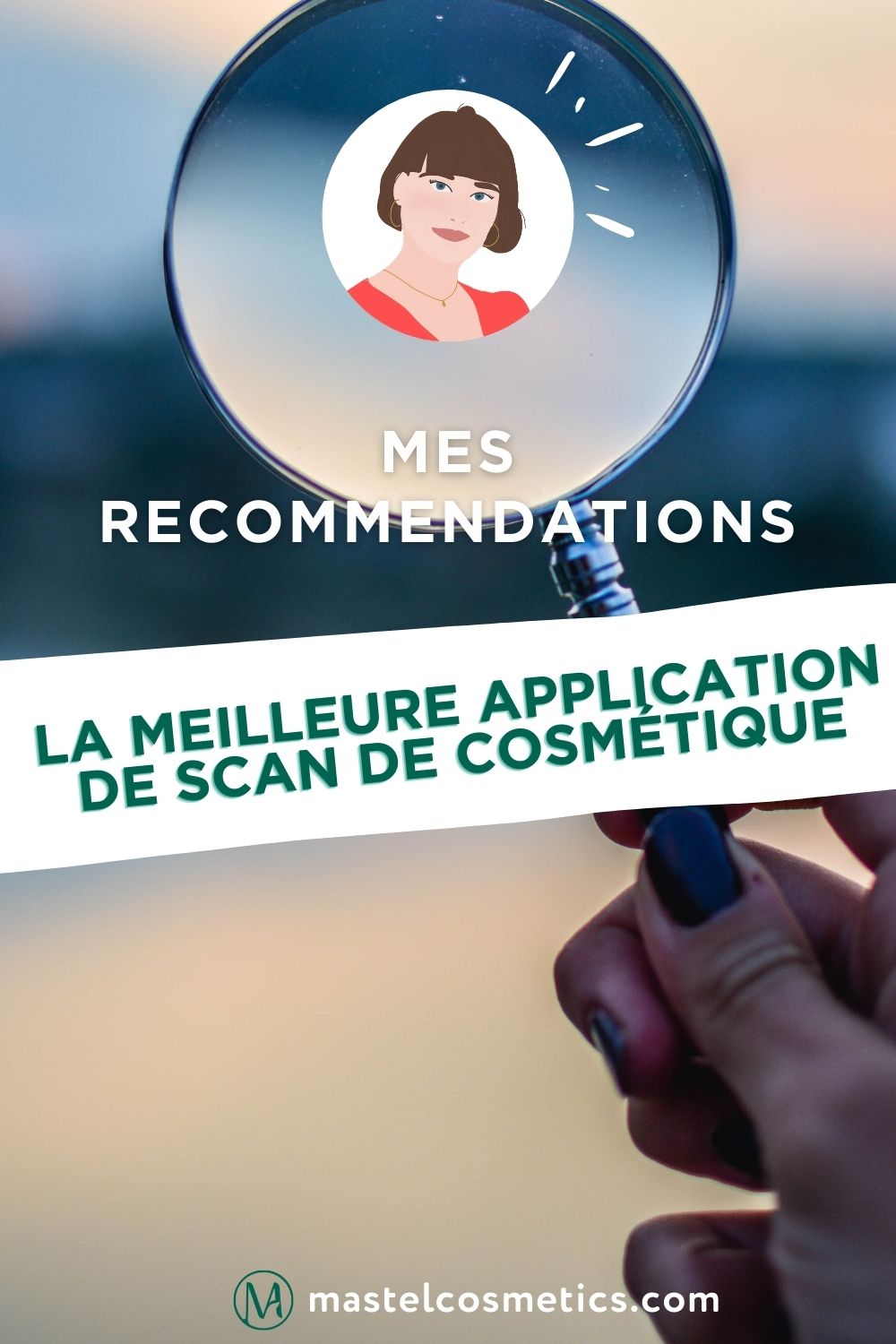Podcast: Episode 34, what's your skin type?
Listen to the audio episode to become an expert on the different skin types
- Available on: Episode 34, what is your skin type?
- Also available on Spotify , Apple Podcast and Google Podcast
Summary of the episode:
- Advice on the active ingredients to use according to your skin type!
- Explanation of the different skin types (very important to know which cosmetics used).
-
Explanation of different skin conditions - often confused with skin types.
- A quick tour of different skin diseases.
WHAT ARE THE DIFFERENT TYPES OF SKIN?
1. Oily skin
These are the skins that produce excessive sebum, the thin layer of fat on the surface of the skin. You have oily skin if your skin is naturally shiny or shiny.
If you wake up in the morning and your skin is shiny and slippery under your fingers all over your face (not to mention sweating or applying a very rich oil or treatment before bed), it is probably that you have oily skin. You may have blackheads or pimples.
Rest assured, it is customary to say that oily skin ages better.
2. Dry skin
These are the skins that do not produce enough sebum. If the layer of fat on the surface of the skin is not sufficient, it can alter the barrier function of the skin . That is to say that the skin is more permeable, there are more exchanges between the inside and the outside of the body, more comings and goings through the skin.

The water that is in the skin evaporates more easily, we speak of an increase in transepidermal water loss (TEWL in English). You know you have dry skin if it feels tight or slightly peeling . It may also look dull.
3. Combination skin
These are the skins that are oily only on the T zone , that is to say, the forehead, the nose and the chin. That is to say almost everywhere except the cheeks, and the eye contour.
The consequences are a mix between oily and dry skin.
4. Normal skin
These are the rare lucky skins that produce neither too much nor too little sebum all over the face. You do not shine, have few pimples, and your skin does not feel tight.
Praise your genetics!
WHAT ARE THE DIFFERENT SKIN CONDITIONS?
Some skin conditions refer to skin diseases, to treat them, you must consult a dermatologist who will be able to advise you and prescribe appropriate medication. By definition, a cosmetic product does not help treat disease and cannot have claims that suggest so. If a cosmetic cannot treat a disease, it can nevertheless help to calm discomfort linked or not to a disease.
1. Sensitive or uncomfortable skin
It's skin that feels tight, itchy, peeling, reddened, hot. It can be due to a reaction to a product used (temporary), or be due to a type of dry skin which has a reduced barrier function which allows more pollutants or irritants to pass through.
This may be due to skin diseases such as rosacea, also called couperose, which concerns white skin, or even eczema.
For sensitive skin, it is better to use products rich in active ingredients such as ceramides to support the skin barrier, bisabolol which is found in chamomile or panthenol which is a derivative of vitamin B5. They both have a calming effect.
In cosmetics, we speak of a calming effect, not to say "anti-inflammatory" which is a term reserved for drugs.
To learn more about ceramides, episode 10 is entirely devoted to it. Personally, these are assets that I love and that I have incorporated into Mastel skincare.
2. Skin showing the signs of aging
It is a skin that slackens, which loses firmness and elasticity , with wrinkles or fine lines at the corner of the eyes.
Sunscreen is the best ally to protect yourself from your worst enemy: the sun. Antioxidants such as co-enzyme Q10 or ginkgo biloba extract help reduce the harmful effects of free radicals (pollution, sun, etc.). Low molecular weight hyaluronic acid can help plump up your skin. And certain tensor active ingredients such as red seaweed and tara shrub ( episode 20 of the podcast is dedicated to this ) tighten the skin to eliminate wrinkles.

In addition, good hydration is recommended. All these active ingredients are my favourites, you can find them in Mastel Cream. Of course, there are other active ingredients such as retinol (derived from vitamin A) but beware of the risk of dryness and irritation, I do not recommend it for pregnant or breastfeeding women.
3. Hyper-pigmentation
It is uneven pigmentation on the skin, where dark spots may appear. There are different types of hyper-pigmentation: melasma which is also called pregnancy mask due to a hormonal change; age spots or sun spots that often appear on the hands or face; post-inflammatory hyper-pigmentation that can occur after inflammation of the skin such as acne.
To help hyper-pigmentation, use sunscreen and an exfoliator with AHAs to get rid of overly pigmented skin cells faster.
You can act on the production of skin pigment with azelaic acid or licorice extracts .
4. Dark circles
They result from excessive pigmentation of the lower eyelid or eye contour. Lifestyle can impact the pigmentation of this area. Make sure you get enough sleep and a healthy diet and protect yourself from UV rays with sunscreen and sunglasses.
Eye creams with caffeine, vitamin C, azelaic acid, or niacinamide (vitamin B3) may help.
However, dark circles can be genetic. In this case, there will be no useful cosmetics. You will have to go to a dermatologist.
5. Scars
They are due to the healing of deep lesions, be careful not to pop the pimples as this will create lesions.

Some pimples such as cysts and nodules cause deep inflammation which can create scars. The appearance of small raised scars can be improved with exfoliants, with active ingredients such as AHAs . But the most effective way to improve the appearance of scars is to see a dermatologist.
6. Enlarged pores
The pores are small holes on the surface of the skin which go to the hair follicles, therefore the hair, and the sebaceous glands which produce sebum.
They are an integral part of the natural anatomy of the skin. Some consider them to be an aesthetic problem but keep in mind that it is not possible to see them before being in front of a magnifying mirror.
Pores don't have muscles, so it's hard to really control their size . Certain hormonal factors can impact pore size. But it seems difficult to have any real action on it other than acceptance . The only active ingredient that may have an impact is retinol. Be careful, it can cause dryness or irritation. You should also wear sunscreen in the morning.
SKIN DISEASES
1. Acne skin
Acne is a skin disease, which is characterized by the appearance of pimples such as cysts, nodules, pustules or papules, which can be located on different parts of the body such as the face or the back. The pimples are red due to inflammation of the skin and can be painful. Its appearance is due to 4 factors : an overproduction of sebum, the clogged pore, a proliferation of the bacterium C. Acnes and an inflammation of the skin.
In addition to these 4 factors, some studies tend to show that free radicals have a direct effect on the appearance of a pimple. It is important to understand how the button works to be independent in the choice of cosmetics.
If this is a problem that concerns you, you know that if an active ingredient has an exfoliating action, it can reduce the risk of clogging pores, if the active ingredient has an antibacterial action it can potentially reduce the proliferation of C bacteria .acnes, etc. Certain active ingredients have an effect on these 4 factors linked to the appearance of pimples, this is particularly the case with certain pomegranate extracts.
Salicylic acid is a fat-soluble active ingredient (soluble in fat/sebum) well known in the industry for its anti-bacterial action which will fight against the bacterium C. acnes. It also has a keratolytic action, which helps to avoid pore clogging. If it's an asset you're interested in, it's often referred to as BHA, the acronym for beta hydroxy acid.

To conclude on acne, having a few pimples is completely normal! A few pimples present do not mean that the skin is acne-prone.
2. Keratosis pilaris
This is characterized by tiny skin-colored bumps, which often appear on the back of the arms. One can imagine this as chicken skin. This is due to a surplus of keratin which blocks the exit of the hair. It is necessary to privilege the application of exfoliant with AHA.
3. Psoriasis
It is an inflammatory and autoimmune skin disease characterized by dry, red skin that itches and peels. The cause of skin cells that migrate too quickly to its surface and pile up, leaving a whitish appearance.
4. Vitiligo
It is a chronic disease that is characterized by large white patches on the surface of the skin, like discoloration. This is due to dysfunction of melanocytes.
5. Dermatosis papulosa nigra
This only concerns black skin. This is characterized by more or less small blackheads. Doctors can advise solutions to remove them if necessary like laser.
Did you miss the last episodes? Take a look at episode 32 - Solutions against greenwashing or the 5 tips for sunscreen experts .
Did you like this article? 📌 Pin it on Pinterest to find it later!
 |
 |
 |









Leave a comment